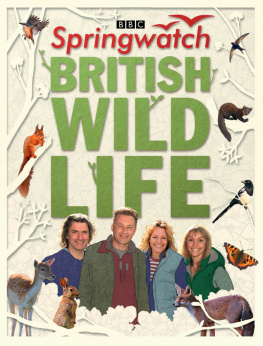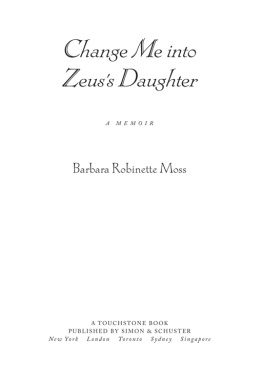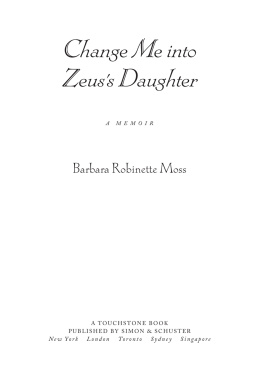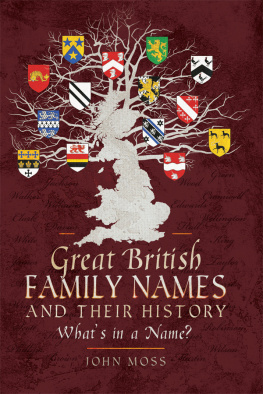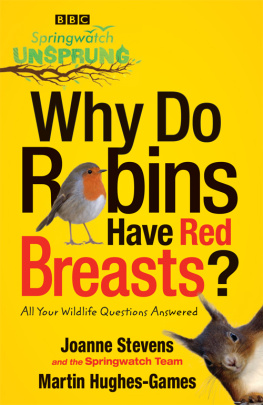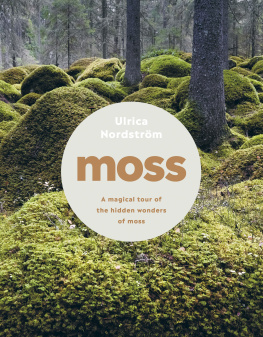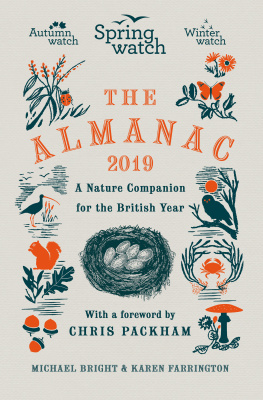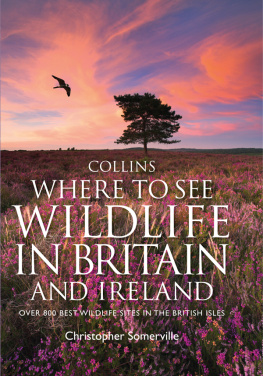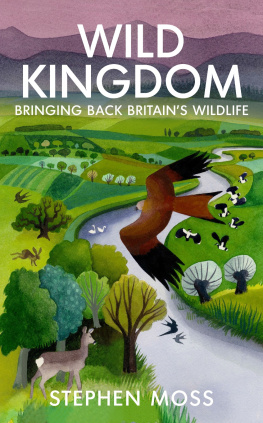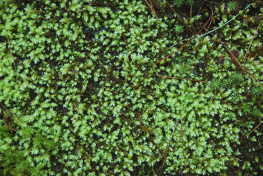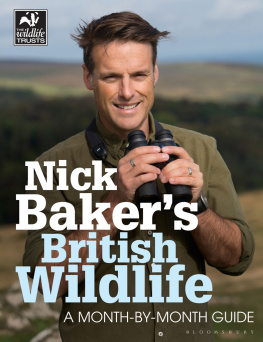Moss - BBC Springwatch British wildlife
Here you can read online Moss - BBC Springwatch British wildlife full text of the book (entire story) in english for free. Download pdf and epub, get meaning, cover and reviews about this ebook. City: London;Great Britain, year: 2012, publisher: HarperCollins Publishers;Collins, genre: Detective and thriller. Description of the work, (preface) as well as reviews are available. Best literature library LitArk.com created for fans of good reading and offers a wide selection of genres:
Romance novel
Science fiction
Adventure
Detective
Science
History
Home and family
Prose
Art
Politics
Computer
Non-fiction
Religion
Business
Children
Humor
Choose a favorite category and find really read worthwhile books. Enjoy immersion in the world of imagination, feel the emotions of the characters or learn something new for yourself, make an fascinating discovery.
- Book:BBC Springwatch British wildlife
- Author:
- Publisher:HarperCollins Publishers;Collins
- Genre:
- Year:2012
- City:London;Great Britain
- Rating:4 / 5
- Favourites:Add to favourites
- Your mark:
- 80
- 1
- 2
- 3
- 4
- 5
BBC Springwatch British wildlife: summary, description and annotation
We offer to read an annotation, description, summary or preface (depends on what the author of the book "BBC Springwatch British wildlife" wrote himself). If you haven't found the necessary information about the book — write in the comments, we will try to find it.
Moss: author's other books
Who wrote BBC Springwatch British wildlife? Find out the surname, the name of the author of the book and a list of all author's works by series.
BBC Springwatch British wildlife — read online for free the complete book (whole text) full work
Below is the text of the book, divided by pages. System saving the place of the last page read, allows you to conveniently read the book "BBC Springwatch British wildlife" online for free, without having to search again every time where you left off. Put a bookmark, and you can go to the page where you finished reading at any time.
Font size:
Interval:
Bookmark:

To Britains wonderful wildlife, for giving so much pleasure to so many people.

Simon Litten/FLPA
Contents

Bill Coster/FLPA
Like the monarchy, afternoon tea and the weather, Springwatch is a British institution. Of course it didnt start that way: in fact, when it began, back in 2003, it wasnt called Springwatch at all. Wild in Your Garden was a week of live TV programmes broadcast from a suburb of Bristol, presented by Bill Oddie, Kate Humble and Simon King. The following year it moved to Devon, was extended to three weeks, and turned into Britain Goes Wild. It wasnt until 2005 that it finally acquired the name Springwatch.
Since then, it has changed location twice (to Pensthorpe in Norfolk and Ynys-Hir in mid-Wales), spawned numerous spin-offs, including Autumnwatch, Snow Watch and Winter Watch, and acquired a whole range of new presenters including Chris Packham, Martin Hughes-Games and Michaela Strachan. It has also become as fixed a part of the TV schedules as EastEnders and Top Gear.
The success of all these shows, and the various website content, campaigns and events surrounding them, is reflected in the fact that the British have rediscovered their age-old passion for wildlife. Actually it was always there, it was just that for a long time those in charge of the TV schedules preferred their wildlife to be foreign and exotic lions and elephants rather than badgers and blue tits. Springwatch has shown that there is a real appetite not just for watching wildlife on our doorstep, but for learning about it, too.
That is what the Springwatch Guide to British Wildlife is all about. It is designed to help you learn more about the wildlife featured in the programmes: from the common and familiar species such as blackbirds and blue tits, through the more obscure examples such as natterjack toads and rare orchids, to iconic creatures such as the killer whale and white-tailed eagle. Each creature or group of plants or animals gets its own illustrated double-page spread, featuring fascinating facts and details of their lives.
Of course this can only scratch the surface: there are plenty of specialised guides available to every group of Britains wild creatures. But once you are hooked, it will hopefully inspire you to learn more about the wildlife we treasure so much.

Marko Knig/Imagebroker/FLPA
The white-tailed eagle (also known as the sea eagle) is Britains largest bird of prey, with a wingspan of over 2m (6ft).

Horst Jegen/Imagebroker/FLPA

Paul Hobson/FLPA
Herbert Kehrer/Imagebroker/FLPAp
Blue tits and great tits are originally woodland birds, which have readily adapted to life in our gardens.
Of all the stars of Springwatch, perhaps none is quite so enduringly popular as the blue and great tits. Their antics, as they jostle for position on feeders, their cheeky behaviour and, above all, their life-or-death struggles as they bring up a brood of chicks under the glare of TV cameras, make them utterly compelling to millions of viewers.
There is one simple reason why these birds have become such stars: they choose to nest in bird boxes, which means that from the earliest days of live TV broadcasts certainly as far back as the early 1990s and Bird in the Nest it was possible to put cameras into their nests. Things have changed a lot since then, of course: instead of huge cameras, we now have a battery of tiny high-definition cameras that can view the nesting birds at all angles, without causing them a moments disturbance.
The reason tits take so readily to nest boxes is that these artificial homes are an ideal substitute for the natural holes and crevices in which these birds nest. For, like so many of our garden birds, tits are originally birds of the woodland or woodland edge. They have made their homes in our gardens primarily because we provide plenty of food for them not just in the shape of seeds and peanuts but also through what we plant, which provides much-needed moth caterpillars for their hungry broods.
And broods dont get much hungrier than a dozen baby blue tits, all crammed into their soft, cup-shaped nest of moss and feathers, inside a tiny wooden box. During the dozen or so days between the chicks hatching and when they finally fledge and leave the nest, a single brood may require as many as 12,000 caterpillars thats 1,000 caterpillars per day, or roughly one caterpillar every two minutes for each of the two parents. No wonder the adult birds look so tatty and exhausted by the end of the breeding season!
Blue and great tits are the two species we often feature on Springwatch, along with occasional appearances by a third garden species, the coal tit. These three are easy to tell apart: the great tit, as its name suggests, is larger than the other two, and has a smart black and yellow plumage with a green back, white cheeks and a thick black strip down its front. Blue tits are smaller, mainly blue and yellow, and also with white cheeks (though the youngsters have yellow cheeks). Coal tits are basically a monochrome version of the blue tit similar in size, with, a black, brown and grey plumage and a distinctive white patch on the back of the neck, or nape.
Three other kinds of tit breed in Britain, two of which, the marsh and willow, are so similar that they werent separated as different species in Britain until the last year of the nineteenth century. Both are superficially similar to the coal tit, being mainly brown with a black cap, but they are both larger and less varied in plumage, and lack the coal tits white nape. Sadly, both marsh and willow tits have suffered major declines in recent years, perhaps due to a loss of suitable breeding habitat.
The final species, the crested tit, is found only in the ancient pine forests of Speyside in Scotland, and can easily be identified by its perky crest. Two other species with tit in their name, the long-tailed tit and the bearded tit, are in fact unrelated to the tits, though long-tailed tits do often accompany flocks of tits in winter.
Unlike many other nesting birds featured on Springwatch, both blue and great tits usually have only one brood of chicks in a season. As they generally live for only a year or two as adults, this is a risky strategy: literally putting all their eggs in one basket. In years when spring comes very early, as in 2007 and 2011, this can mean that by the time the birds begin to nest, the moth caterpillars on which they so depend are already coming to the end of their lifecycle and beginning to pupate, which can mean very bad years for the birds. It remains to be seen whether these species are bringing their own breeding season significantly earlier to cope with this change. Evidence suggests that they probably are.
Font size:
Interval:
Bookmark:
Similar books «BBC Springwatch British wildlife»
Look at similar books to BBC Springwatch British wildlife. We have selected literature similar in name and meaning in the hope of providing readers with more options to find new, interesting, not yet read works.
Discussion, reviews of the book BBC Springwatch British wildlife and just readers' own opinions. Leave your comments, write what you think about the work, its meaning or the main characters. Specify what exactly you liked and what you didn't like, and why you think so.

